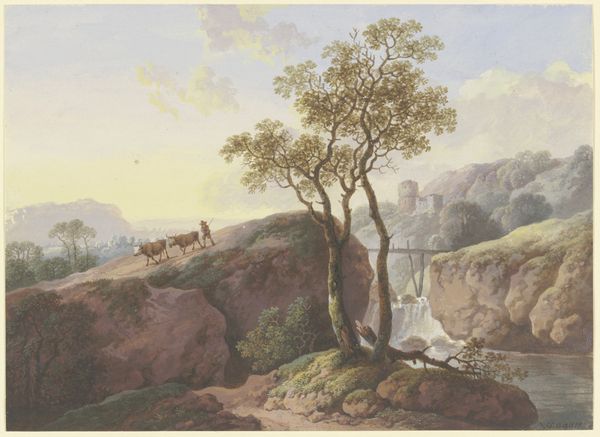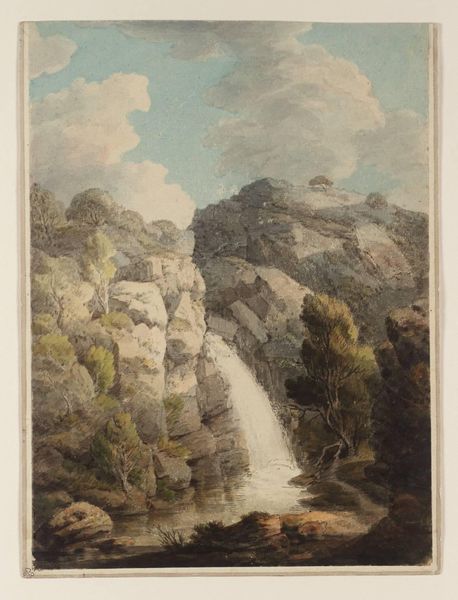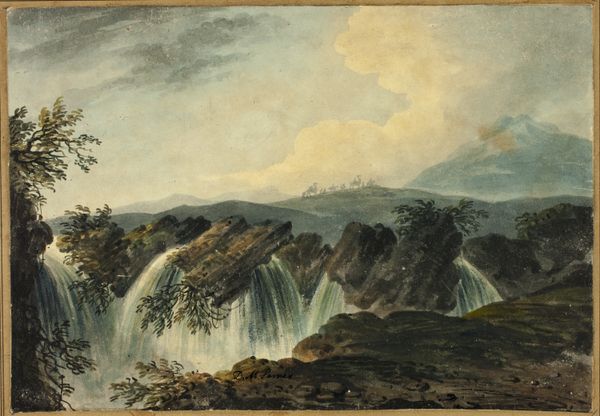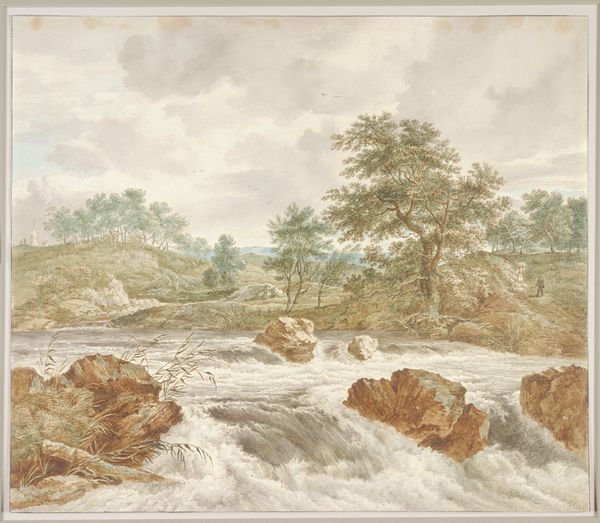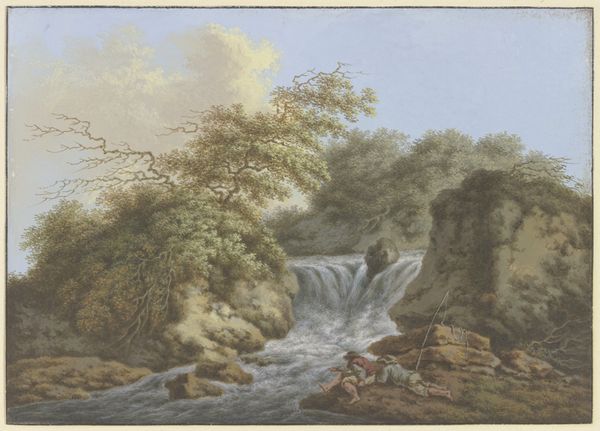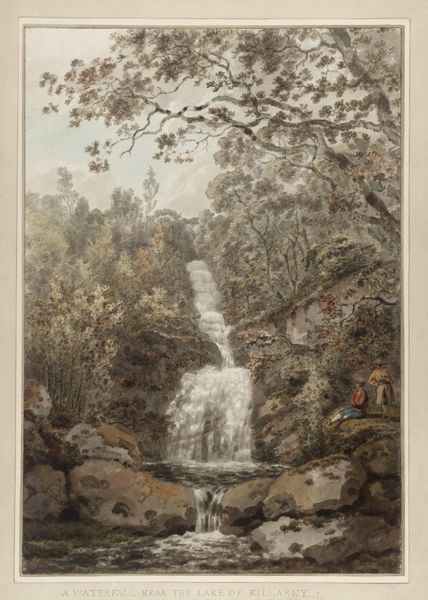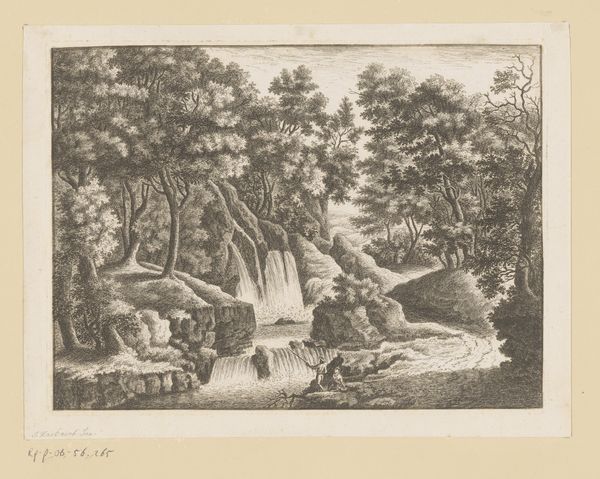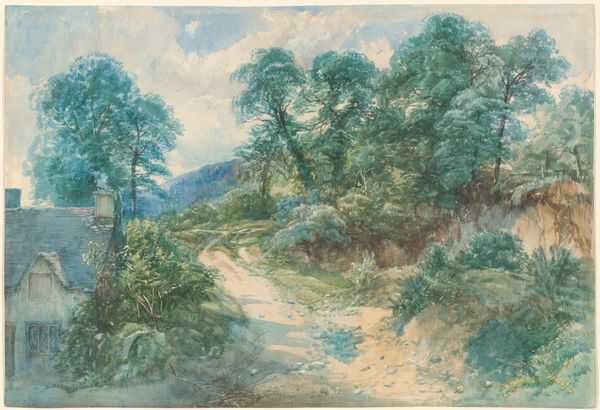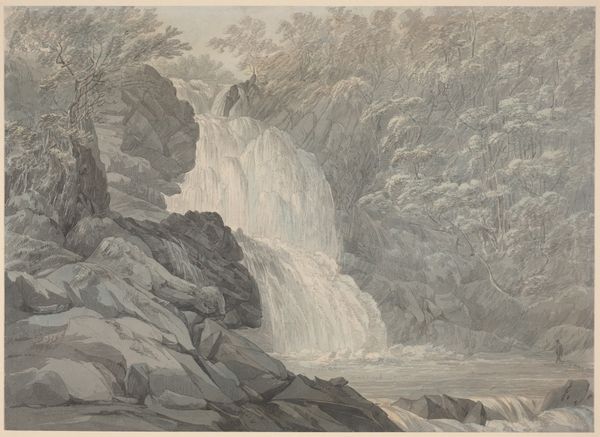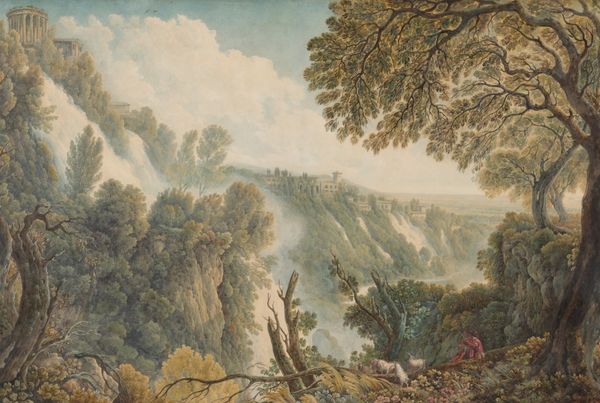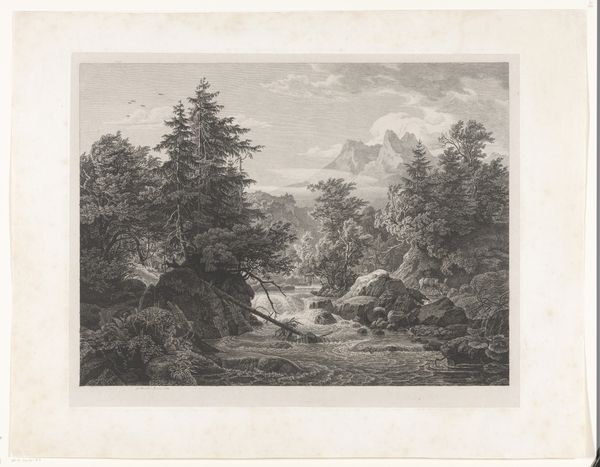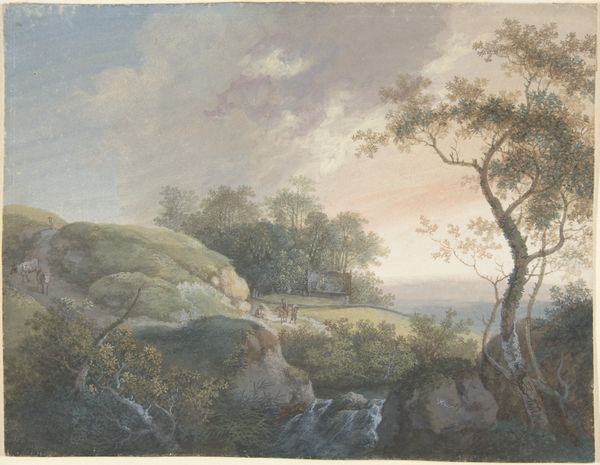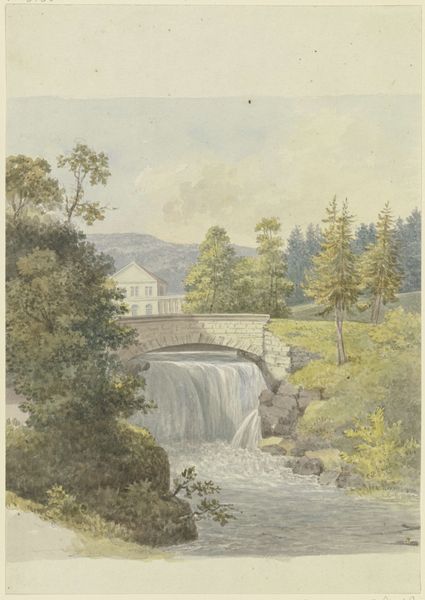
#
possibly oil pastel
#
oil painting
#
earthy tone
#
coffee painting
#
underpainting
#
painting painterly
#
watercolour illustration
#
botanical art
#
watercolor
#
warm toned green
Dimensions: height 490 mm, width 715 mm, height 760 mm, width 980 mm
Copyright: Rijks Museum: Open Domain
Editor: Here we have "Gezicht op de rivier van Kema, Waterhaalplaats" by Charles William Meredith van de Velde, dating sometime between 1838 and 1898. The trees surrounding the water's cascade create such a peaceful and still environment, and this feels more illustrative than artistic. What stands out to you? Curator: I am immediately drawn to how this image potentially romanticizes the colonial gaze. Water sources often became focal points of resource extraction and control, and landscapes such as these frequently justified intervention by outside entities. Do you think the tranquility you perceive could be a constructed narrative, obscuring a more complex relationship between colonizer and colonized regarding natural resources? Editor: That's interesting...I hadn’t considered the viewpoint of access and control. So the beautiful, serene environment actually served a purpose? Curator: Precisely! It raises the question: whose gaze are we adopting when viewing this piece? The composition itself, with its almost idealized depiction of nature, risks neutralizing the potential environmental impact or power dynamics inherent in resource management during the colonial era. The visual pleasure might distract us from critical interrogation. Editor: So we shouldn’t just take pretty picture for granted. Curator: Exactly. The “stillness” might also reflect an imposed stasis on the local population and their traditional interactions with the land. We need to consider whose stories are missing from this picturesque scene. Perhaps those most closely associated with this 'Waterhaalplaats?' Editor: That is insightful! I will definitely consider artwork with a more critical view. Curator: It is vital for decolonizing our approach to visual arts, viewing artworks as entry points into broader social and political dialogues rather than isolated aesthetic objects.
Comments
No comments
Be the first to comment and join the conversation on the ultimate creative platform.
